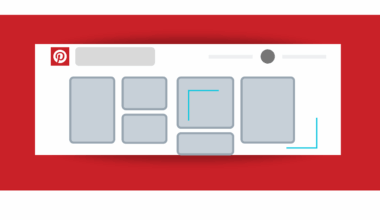How to Protect Your Emergency Savings from Inflation
In today’s economy, inflation poses a significant risk to your finances, especially your emergency savings. An emergency fund should ideally cover three to six months of living expenses, providing a safety net in times of financial distress. However, as prices rise, the purchasing power of those funds diminishes if left stagnant in a low-interest savings account. It is crucial to compose a strategy that balances accessibility with the need to preserve value over time. Consider putting your emergency savings into a high-yield savings account or a money market account, which provides higher interest rates than traditional savings accounts. These options allow your money to grow while still being readily accessible for unexpected expenses. Additionally, regularly reassessing your savings strategy in relation to inflation rates ensures that your funds maintain their value. Remember, the goal is not merely saving but preserving the purchasing power of your savings. Taking proactive measures against inflation can safeguard your finances and offer peace of mind. Explore options for interest-earning accounts that keep pace with inflation while retaining liquidity in case of emergencies.
Additionally, diversifying your savings can play a crucial role in protecting against inflation. While having an accessible emergency fund is essential, consider allocating a portion to inflation-protected securities or commodities. These investments can serve as a hedge against inflation as their values tend to increase alongside rising costs. For example, Treasury Inflation-Protected Securities (TIPS) adjust their principal value based on inflation rates, providing a safer alternative for your funds. Real estate investments and stocks also offer potential to outpace inflation over the long term but require more time and risk tolerance. Balancing liquid assets with these investments can ensure that you have immediate access to funds in emergencies while also engaging in growth opportunities. Create a comprehensive financial plan that clearly defines your risk appetite and investment horizon, enabling you to navigate these choices effectively. Consulting with a financial advisor can also provide tailored strategies that align with your goals. Assessing your income sources, current expenses, and inflation trends will guide you in making prudent decisions regarding your emergency savings and investments.
The Importance of Regular Reviews
Regularly reviewing and reassessing your savings strategy is vital to maintain protection against inflation. Life circumstances, financial goals, and inflation rates can change, making it essential to adapt your strategy accordingly. Set a schedule to review your emergency savings and investments at least annually or whenever significant financial changes occur. During these reviews, consider whether your current contributions to your emergency fund are adequate compared to your living expenses. Adjust your contributions based on inflationary trends and your evolving financial landscape. If you find your savings stagnant or insufficient to meet potential emergencies, take action by increasing your savings rate or reallocating your funds into higher-yield options. Additionally, consider setting up automatic contributions to your emergency fund to ensure you consistently add to it without the temptation to spend those funds elsewhere. Establish a reliable system that keeps your financial health in check while protecting against rising costs. An active approach will empower you to meet unforeseen challenges, ensuring your emergency savings support you in times of need.
Emergency savings shouldn’t just be seen as a financial cushion; it should be a dynamic part of your financial strategy. Educating yourself about current economic trends is paramount, as understanding inflation can inform better decisions about your emergency savings. Regularly analyze how inflation impacts the cost of essential goods and services, then compare it to your savings output. This evaluation will highlight the importance of adjusting your savings plan to combat the diminishing purchasing power of your emergency fund. Furthermore, staying engaged with financial news and tools can enhance your ability to respond swiftly to changes in economic conditions. Make it a habit to read market analysis and financial publications that shed light on inflation trends. Familiarize yourself with different saving and investment vehicles that not only preserve your capital but also grow it in accordance with inflation. Financial literacy will arm you with knowledge, enabling you to create strategies that align your savings with your long-term goals while actively fighting the effects of inflation on your financial security.
The Role of Budgeting
Budgeting is an essential element in maintaining both your emergency savings and protecting them from inflation. By clearly defining how much you can set aside monthly, you create a roadmap for financial success. Establish a comprehensive monthly budget that accounts for all your necessary expenses, discretionary spending, and savings goals. This process of careful planning helps identify areas where you can cut down spending, ultimately freeing up more money for your emergency fund. Additionally, consider prioritizing your savings goals when developing your budget. Allocate a specific percentage of your income directly to your emergency savings before any other expenditures. Consistency in saving will accelerate fund growth, keeping pace with inflation over time. Recognizing that your emergency fund’s value is eroded by inflation pressures the importance of proactive budgeting. Make it a financial habit to track your spending closely and reassess your budget regularly to ensure you incorporate inflation considerations in your savings plan. This process will bolster your financial stability and allow you to respond promptly to life’s uncertainties.
Moreover, investing in your financial knowledge earns you substantial dividends in maintaining your emergency savings. Learning about various financial instruments can help you allocate your funds more effectively. Attend workshops, seminars, or online courses that detail saving and investing strategies tailored to combat inflation. Understanding options such as treasury bonds, index funds, and mutual funds prepares you to make informed decisions regarding where to place your money. Additionally, consider engaging with professional advisors who possess expertise in inflation-resistant investment options. Conducting thorough research about how different asset classes respond to inflation will empower you to create a diversified portfolio that mitigates risks while taking advantage of potential growth. Embrace a learning mindset; continuous education enables you to stay ahead of inflation’s impacts on your savings. An empowered investor is better equipped to navigate adverse economic conditions successfully. As you accumulate knowledge, you strengthen your financial foundation, ensuring your emergency savings evolve to meet rising costs while providing security in turbulent times.
Conclusion
In conclusion, protecting your emergency savings from inflation necessitates a proactive and holistic approach to personal finance. This can be achieved through careful planning, regular reviews, and informed investment choices. Opting for high-yield saving options, maintaining liquidity, and considering inflation-hedged investments are just a few ways to safeguard your savings. Budgeting serves as an essential tool in this process, allowing you to allocate funds consistently towards your emergency reserve. Continuous education about financial strategies enables you to make informed decisions that adapt to economic changes. Regularly reassessing your savings strategy in light of inflation reinforces your financial agility, ensuring your fund remains a robust support system in challenging times. With thoughtful actions, you can shield your finances against the diminishing purchasing power that inflation inflicts. As you navigate your financial journey, remain committed to optimal emergency savings practices that afford you peace of mind. By doing so, you not only protect your funds but also position yourself to thrive through uncertainties that financial life may present.
Taking these steps will help you avoid the pitfalls of complacency in saving. Rather than allowing inflation to undermine your emergency savings, employ these strategies to extend their growth potential. Aim to create a multi-faceted financial strategy that recognizes both present needs and future aspirations. Keep the lines of communication open with financial advisors or community resources to stay informed of best practices. The intersection of personal finance and macroeconomic factors such as inflation can be daunting, but preparedness and education pave the way for confidence and resilience. In a world where inflation looms, developing a flexible and strategic savings plan is vital. Recognizing the value of maintaining an emergency fund that grows alongside inflation will provide you with the ultimate financial security. Embrace the challenge of inflation head-on, equipping yourself with tools to empower your finances. Leave no stone unturned in building a savings strategy that meets your current and future needs while preserving purchasing power effectively.


